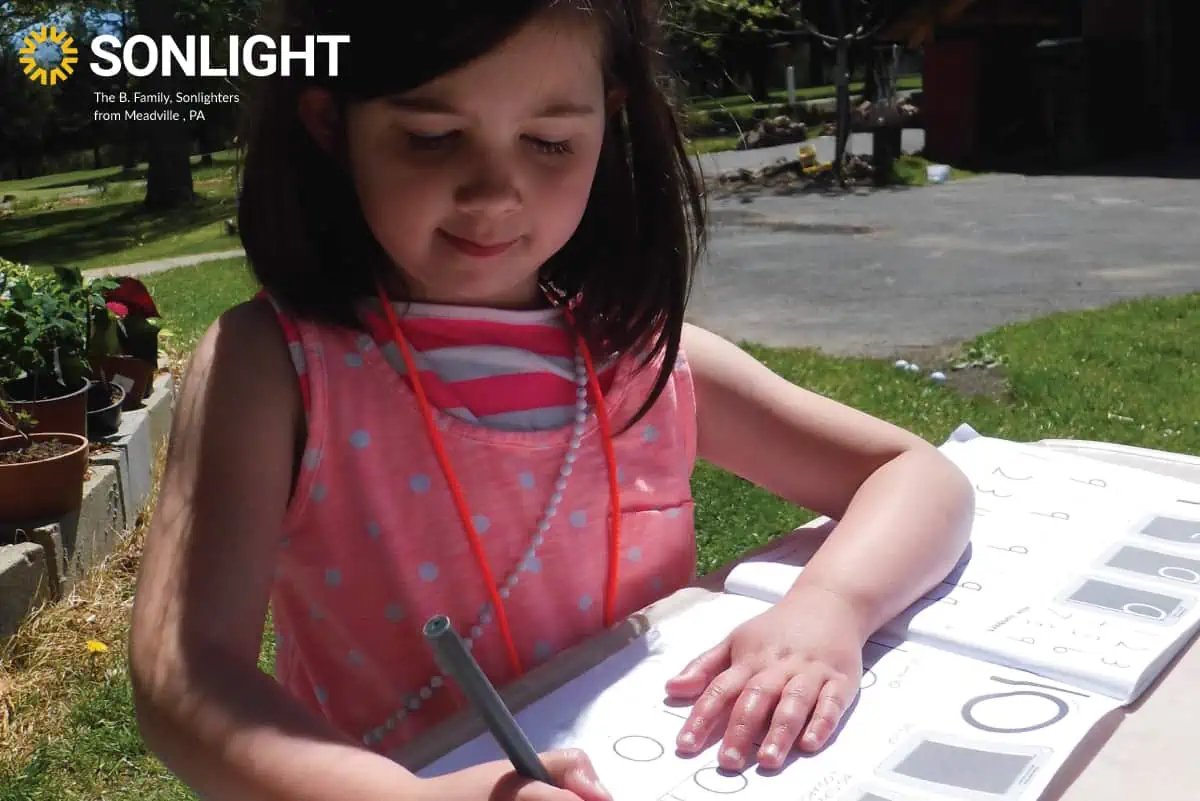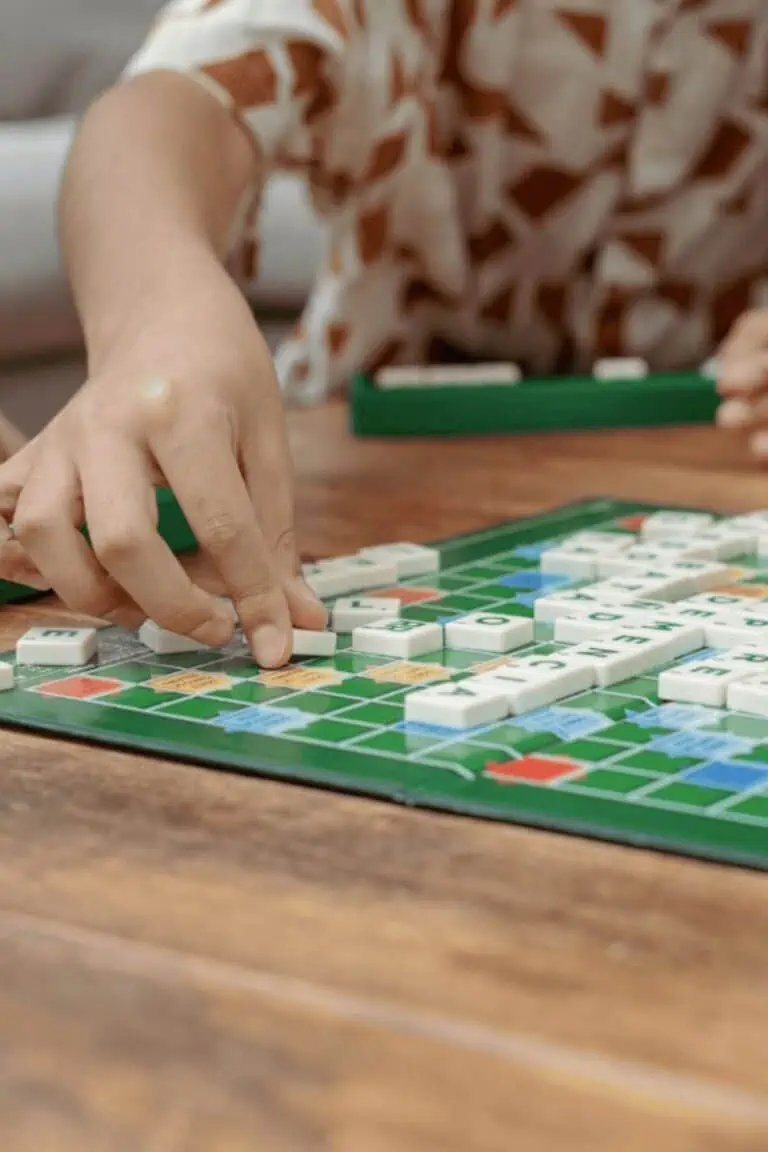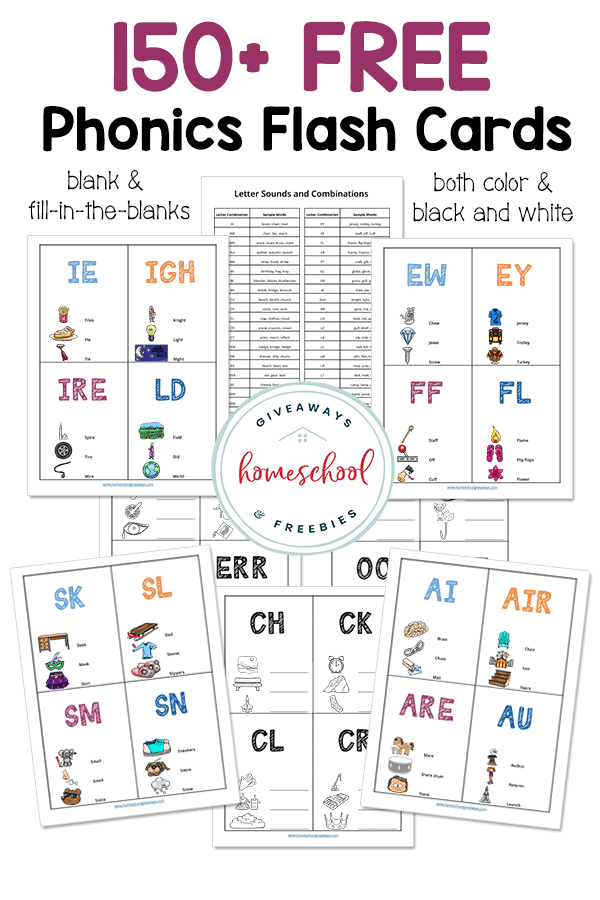Fun Ways to Teach Handwriting to Young Students
Published:
April 19, 2023

Contributor:
Sonlight
Disclosure: This post may contain affiliate links, meaning if you decide to make a purchase via my links, I may earn a commission at no additional cost to you. See my disclosure for more info.
Many homeschool moms wonder how to teach handwriting to their young children. It can be a daunting task for many moms, but with a bit of understanding and helpful resources, you’ll be able to make handwriting lessons fun for your kids.
How to Teach Handwriting
In the primary grades, the teaching of handwriting is one of the main skills your younger students will need to learn. But before we get to the details, you need to know a bit about fine motor skills of young children.
The small muscles of the wrist and hand are still developing in young children, and so kids mature in their fine motor control on an individual timeline. It’s important to realize that sometimes growth in those fine motor skills necessary for handwriting success seems slow.
So don’t despair if correct letter formation doesn’t seem to click with your kindergartener. There are a few other pre-writing steps that will help.
Why Handwriting is Important
Handwriting is important because our children need to learn to write legibly. While legible handwriting is a worthy goal, it goes a step further. Did you know that the act of writing also improves memory?
When kids can physically write down something, it makes a special connection with the brain that just isn’t there if they type it or touch a screen instead.
Handwriting Skills
Before you worry about proper letter formation with your young children, go ahead and work on these sequential skills first. When your child is very young, take notice of hand dominance. Which hand do they prefer to use for tasks, picking up items, or even drawing with crayons?
Prewriting Skills
Prewriting skills refer to those skills that must be in place for learning to form letters. Elementary school students need to work on these prewriting skills first.
- Visual perceptual skills: Before your child can learn the correct way to form letters, he needs to work on hand-eye coordination. You can have fun with this skill by having him pick up pom poms or other small objects and place them in a container.
- Gross motor skills: Encouraging plenty of play is an easy way to help your child work on gross motor skills. Kicking a ball, throwing, tossing, and running are all important skills.
- Fine-motor skills: Then helping your child work on his pincer grasp, that is – can he use his thumb and pointer finger to pick up a small object? It’s important to work on finger strength.
- Crossing the midline: This cognitive skill helps the left and right sides of the brain work together to complete tasks where your child has to reach across the middle of his body to do a task. Growing this skill is important for coordination, which is important for future handwriting success. noticing patterns and shapes: What are letters except for patterns and shapes? When your child has lots of practice tracing shapes and recognizing patterns, they will do better with handwriting.
If you’re teaching preschool at home, there are a lot of fun activities you can do to help grow your child’s prewriting skills. Include lots of free play, puzzles, shape tracing sheets, cutting vertical lines and horizontal lines, and tracing and cutting curvy lines. All of these simple tasks will help prepare them for formal handwriting instruction.
Pencil Grasp
Correct pencil grip is important when you’re teaching handwriting. In fact, proper pencil grip is the starting point for your direct instruction in handwriting. There are several things to keep in mind when trying to figure out the most effective way of correcting a poor pencil grasp. And the first tip is not to get frustrated with your child! They are still growing their muscle strength, which is one of the keys to fixing that pencil grasp.
The goal here is referred to as the “dynamic tripod” grasp where the thumb, index finger, and middle finger are forming a stable, yet flexible and controlled hand position for handwriting.
Letter Formation
Once your child has perfected his pencil grasp, one of the first handwriting techniques to help him with is letter formation. At first, you can work with large motions as your child forms letters using various tools. Using various mediums is a fun way to teach letter formation.
For example, you can start with tracing letters in sand on a baking tray. Or if you can stand a mess, go ahead and put shaving cream on the table for your child to practice letter formation in using their index finger.
Best practice says to start with teaching uppercase letters first. This helps prevent letter reversals and is generally easier for children.
Once your child has succeeded with this tactile letter formation practice, you can help them learn to use this letter formation pattern on paper with top and bottom lines to help with placement.
Legibility
Of course, as homeschool parents, we’re always concerned with legibility. Young writers can learn to write legibly with lots of practice. Letter-writing fluency will help them be able to focus on legibility. That is, as the physical act of handwriting becomes second nature to them, and they’re able to recall and write the letters properly, they can focus on legibility.
Tracing Letters
An easy way to teach proper handwriting is to give your child the opportunity to trace letters. Kids love to write their own names, so start with a writing your name worksheet. It will help them form letters correctly.
Letter Size
When children start with uppercase letters in their handwriting practice, understanding the proportions of lowercase letters can sometimes be tricky. This is where you’ll want to encourage lots of tracing on a daily basis, along with utilizing helpful guide paper and handwriting worksheets. We’ll link a few below.
Correct Slant
In order to perfect the correct slant when learning handwriting, children should be encouraged to tilt their paper at a slight angle. Of course, this angle will vary depending on if your child is right or left handed. Proper letter formation will have a slight slant when compared with a straight line.
Letter and Word Spacing
One of the most common handwriting problems is proper spacing between letters and words. To encourage proper letter and word spacing, you can use these sentence tracing worksheets. It does take consistent practice and hard work, but with the right direction and good handwriting examples to follow, your kids will be able to master proper spacing. When children become more fluent in their handwriting, using continuous strokes rather than focusing on single letters, they will be able to learn proper spacing techniques.
Seating Position and Posture
Of course, many handwriting challenges will be solved with correct seating position and posture. For best handwriting results, children should be seated with a table and chair that is the right size for them. Feet should be flat on the floor with knees at a 90 degree angle. That means that a slouched posture or leaning over the table will make it challenging for kids to be successful with handwriting. With the arm and wrist resting on the table, the non-dominant hand should stabilize the paper as the child uses correct pencil grip with the dominant hand.
Tips for Teaching Handwriting
Here are some helpful tips for teaching handwriting to your young kids.
Use Guide Paper
Many children find guide paper such as graph paper to be very helpful in keeping their letters at the proper height and spacing. Since graph paper can be rather small, you may want to use primary-lined handwriting paper for your younger children and gradually use smaller-lined paper as they mature in their writing abilities.
Practice Writing Letters on Guide Paper
Common handwriting problems can be solved by having your kids practice writing letters on guide paper. Guide paper simply gives students horizontal lines to keep their writing properly spaced horizontally and vertically. This is sometimes called penmanship paper. Some children benefit from a more tactile guide paper with raised lines.
Introduce Letters in Similar Groups
An effective way to provide direct instruction of handwriting is to teach letters in similar groupings. For example, introduce letters together that have similar pencil strokes. Start with vertical lines (L, F, E), then horizontal (D, B, P), curved lines (C, O, G), and then diagonals (K, M, W). Teach capital letters first, then lowercase.
Cursive Vs Print Handwriting
There’s an age-old debate about teaching cursive writing. After years of experience teaching handwriting to their kids, most homeschool moms would say that cursive handwriting is a great skill to teach your kids – even if it can be challenging! The key with learning cursive letters is to get comfortable with continuous strokes. A great way to start learning cursive is to tackle the basic strokes first using cursive writing worksheets.
Multisensory Techniques for Teaching Handwriting
Many children learn well when you use multi sensory teaching techniques. Plus, tactile learning experiences can be more fun! Here are a few ideas.
Mazes
Mazes provide a great kinesthetic activity to help your child grow their fine motor control, visual perception, and ability to cross the midline. All of these skills are important for handwriting success.
Curve Drawing Activities
Learning to draw pre-writing shapes will help your child be able to form uppercase and lowercase letters more easily. So it’s as simple as encouraging them to use shapes to draw pictures – circles, squares, zig zags, and curvy lines.
Sensory Writing
Grab the shaving cream and let’s start having fun with sensory writing! If you’re okay with a bit of a mess, spray shaving cream on the table top or kitchen counter – or better yet, do it outside on a plastic tablecloth – and call out letters for your child to “write” in the shaving cream. Go ahead and use different mediums for sensory writing, like a tray of sand or beans. Your child can use his index finger or an unsharpened pencil as a writing tool.
Assessment of Handwriting Skills
There are a few things you can do if your student’s handwriting is not up to par. One great tip is to “think big before you think small.” That is, have your child create or draw the letter in a big way before showing them how to properly draw it to scale on paper. With consistent practice, your children will continue to see handwriting success.
In Conclusion
So whether you’re beginning to teach handwriting to kindergarten students, or trying to problem-solve some issues for older students, these tips and tricks will help your students grow their handwriting fluency and have fun while doing it!











